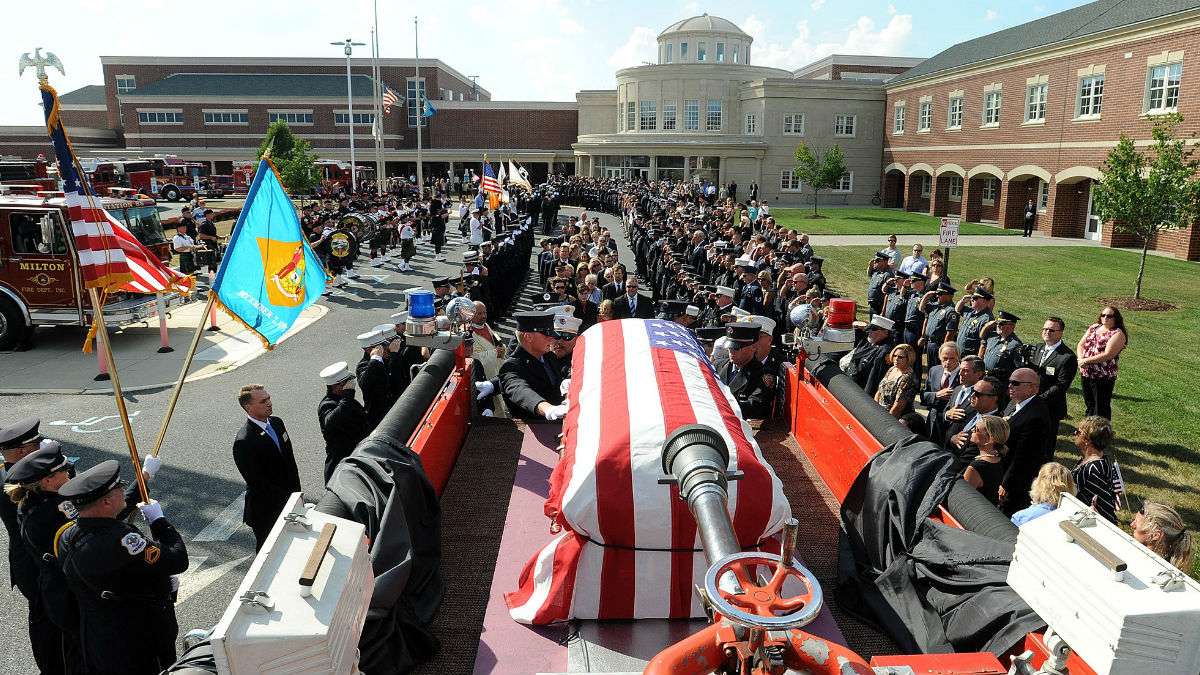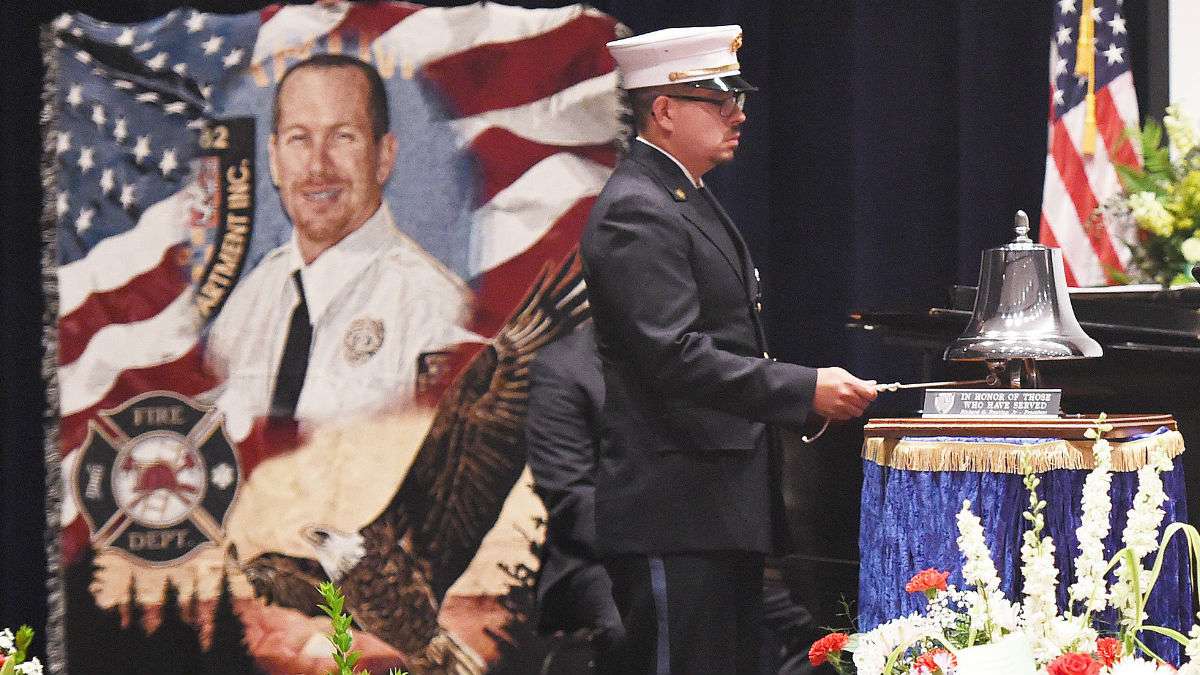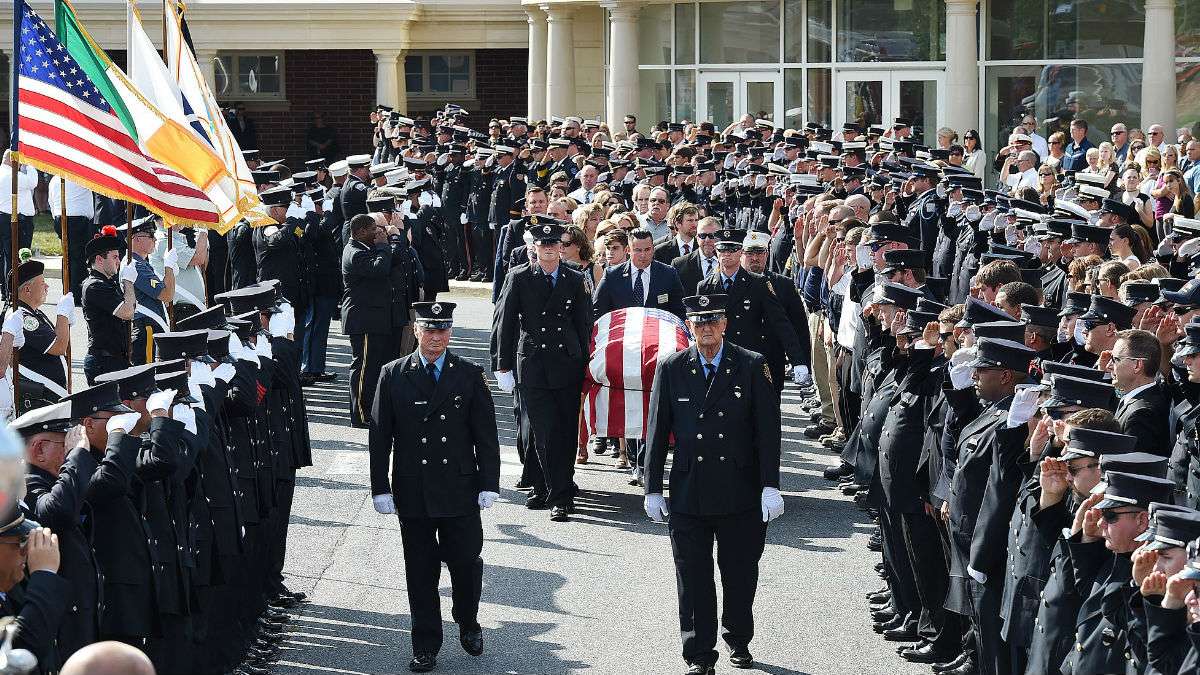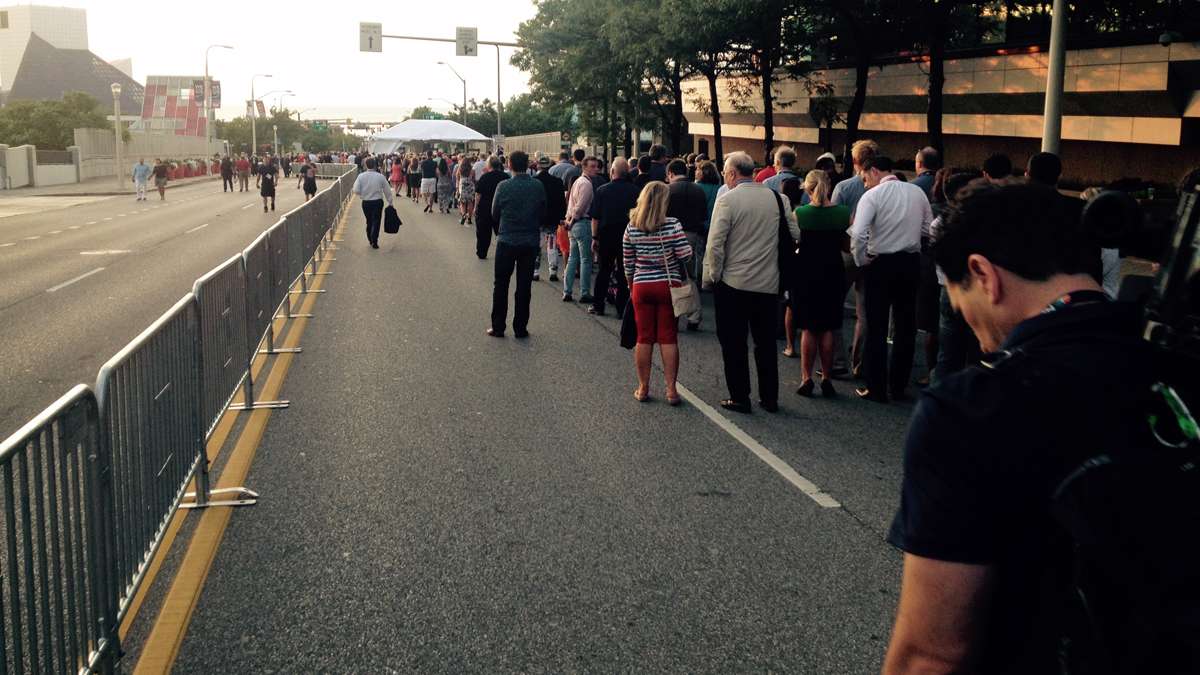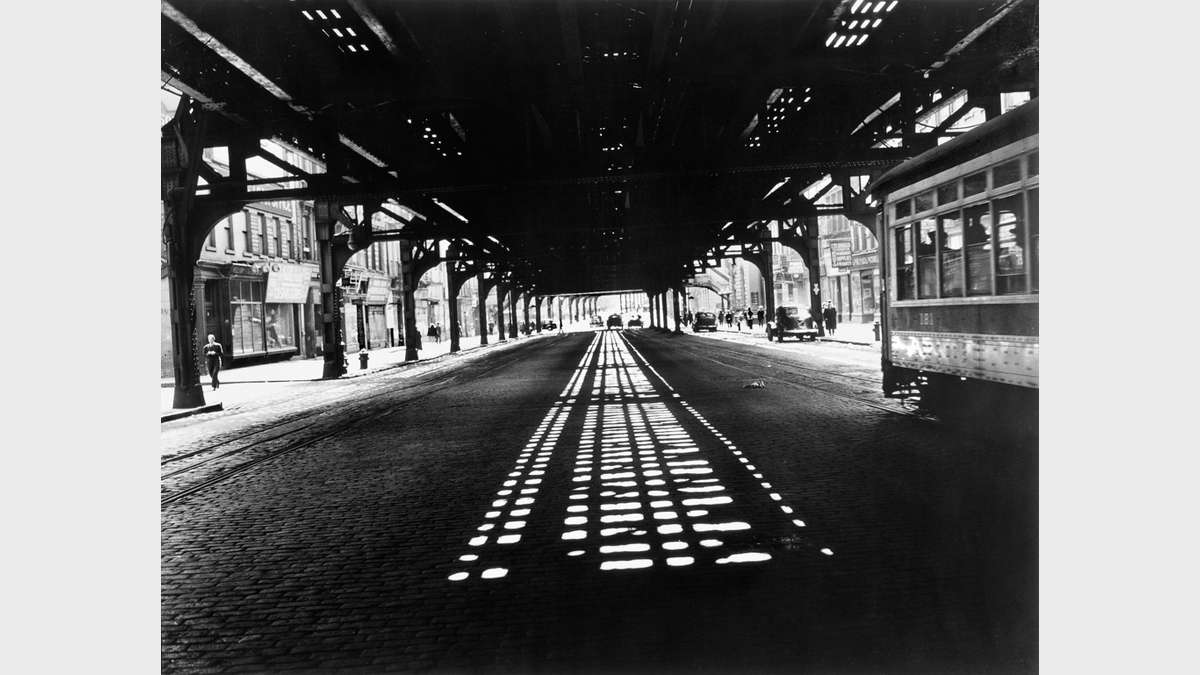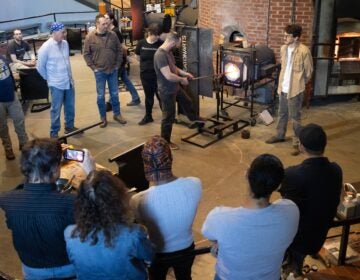Exhibit looks back at when New York’s Bowery was skid row
The night is black in the city that never sleeps. It was a time of wise guys and dames, ‘moidah’ and coppers, bums in the Bowery and couplings on Coney Island. Two headlights in a 1940s model Chevrolet glow like owl eyes. The driver, a cigar clenched in his mouth, is lit from below by a flashlight held between his knees. While tuned to the police radio, the crime photographer has shot one of the first selfies: “Weegee the Famous.”
Weegee’s Bowery, an exhibit of black-and-white photographs by New York’s infamous press photographer (born Usher Fellig on June 12, 1899, in what is now Ukraine; his first name was changed to Arthur at Ellis Island), is on view at Mana Contemporary in Jersey City through Aug. 5.
Weegee’s photographs show the Bowery when it was New York’s Skid Row. A gathering point for derelicts and down-and-out transients who huddled in the shadow of the Third Avenue elevated railway, it was notorious for its fleabag hotels, flop houses that offered 25-cent-per-night beds, and crowded all-night missions that provided food and shelter to those who could afford neither.
Today, the Bowery is prime real estate. Its magnificent architecture (at the end of the 18th century, the Bowery was lined with grand theaters and mansions) has been restored, and construction of boutique hotels, cafes, bars, restaurants, beer gardens and art museums is ongoing.
Jersey City has undergone a similar transformation and is sometimes called New York’s sixth borough. At its center is Mana Contemporary, the 35-acre collaborative community bringing together dance, art and music in a sprawling red brick complex that once housed a tobacco warehouse.
Founded in 2011, Mana Contemporary’s cluster of factory buildings, originally built in 1890, offers artists high-ceilinged studios, a supply shop, framing, packing, conservation, restoration and storage services. The “hive structure” encourages the exchange of ideas between painters, sculptors, filmmakers, dancers, recording artists and others. Plans call for a 1,400-seat theater, four restaurants, several more art exhibition spaces and studios for 250 artists, as well as studios for architects and interior designers.
Mana was started by Israeli-born moving magnate Moishe Mana—”the man with a van” who dropped out of law school in Telaviv and, coming to the U.S. in 1982, slept on a bench in Washington Square Park, washing dishes for small change. By 1988 he was grossing $12 million a year, with branches of Moishe’s Moving & Storage across the country. Soon he added real estate development, media, and wine, fashion and document storage to his empire. Some of Mana’s clients were art collectors, and the former tobacco facility offers ideal storage conditions while also making the artwork available for viewing. Art storage clients include major museums.
Like Moishe, Weegee also struggled as a Jewish immigrant. He grew up on the Lower East Side surrounded by privation. Playing fiddle accompaniment to silent films and reading detective novels were his passions. At age 14, he dropped out of school to work as an assistant to a commercial photographer and left home at 18, living in hostels for the homeless, on park benches and in train stations.
“The Poet of the Night” started photographing kids with ponies, moved up to working in a darkroom at a passport studio, and then in darkrooms at The New York Times and United Press International. In 1935, he struck out on his own, selling to New York’s daily newspapers: The Herald Tribune, The Daily News, The Daily Mirror, The New York Post, The World Telegram and The Journal American all competed for the first and best images of the seamier side.
The squawk from a police scanner gave rhythm to Weegee’s life. Living across from police headquarters with a police radio in his car, the trunk outfitted with photography equipment and a typewriter for cranking out captions, he was the first at the crime scene, shooting bystanders, victims and sometimes the criminals themselves. He was called “Ouija” because, like the moving piece on the board game, he had an inner sense for finding his way to the crime scene. He later changed the spelling to “Weegee” to make it easier to read and pronounce.
In 1997 the International Center for Photography in New York City was given Weegee’s estate. ICP opened a branch at Mana in 2015 as an extension of its Manhattan campus, and ICP has organized the exhibit on the occasion of having just opened a Bowery location.
ICP at Mana is open by appointment only. To make an appointment, contact exhibitions@icp.org.
Hours Monday-Friday 10 a.m.-5 p.m. and Saturdays, noon-6 p.m. Admission is free. www.manacontemporary.com
__________________________________________
The Artful Blogger is written by Ilene Dube and offers a look inside the art world of the greater Princeton area. Ilene Dube is an award-winning arts writer and editor, as well as an artist, curator and activist for the arts.
WHYY is your source for fact-based, in-depth journalism and information. As a nonprofit organization, we rely on financial support from readers like you. Please give today.




